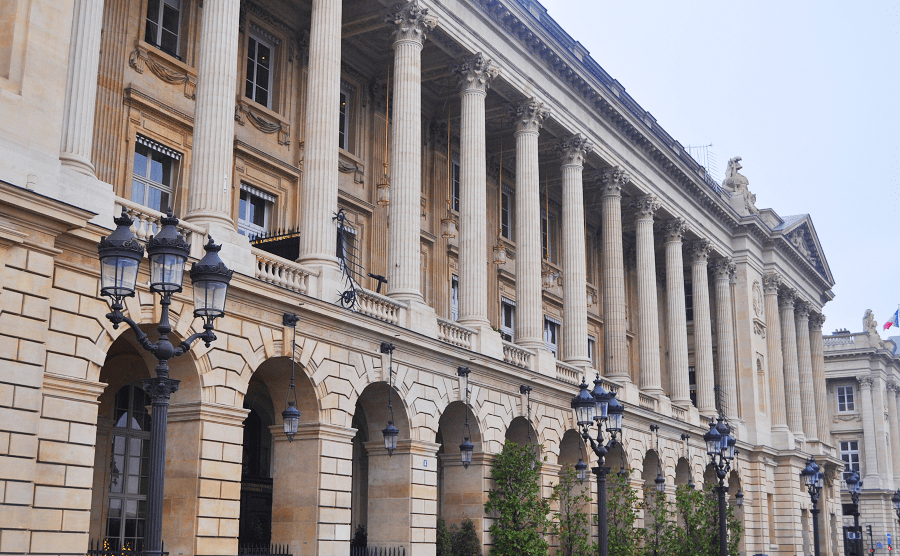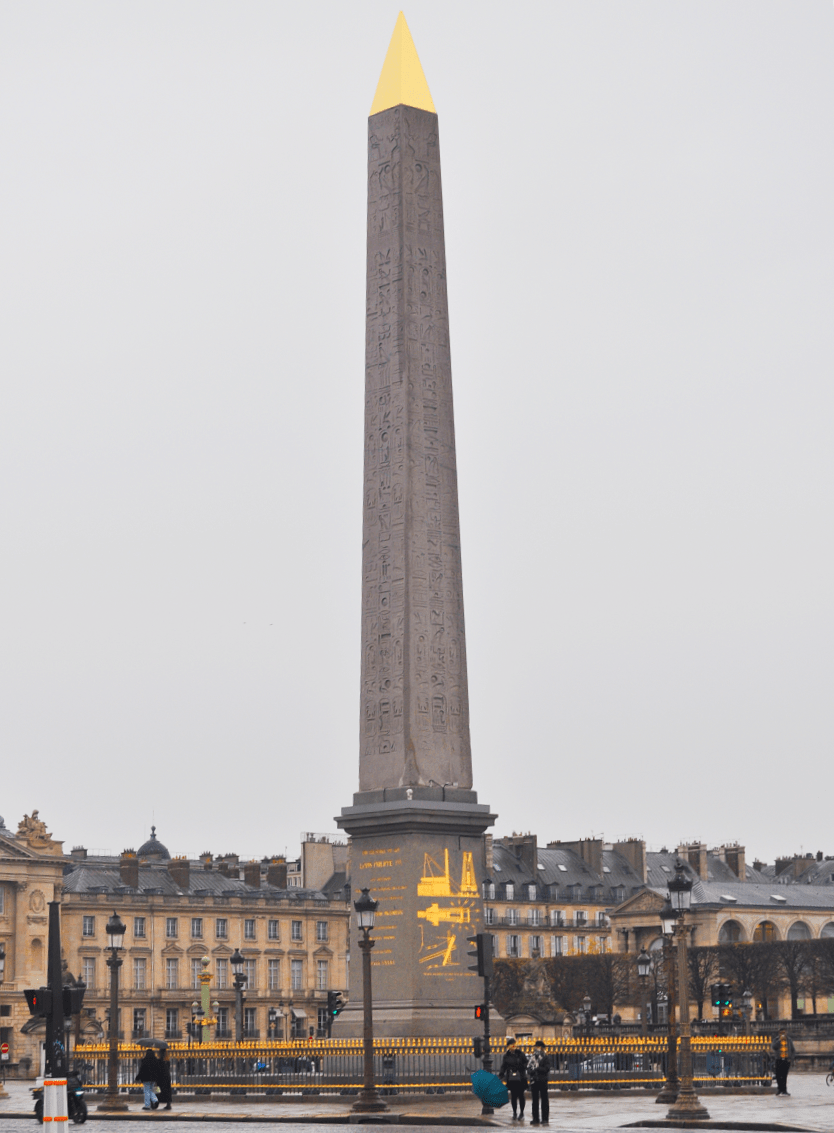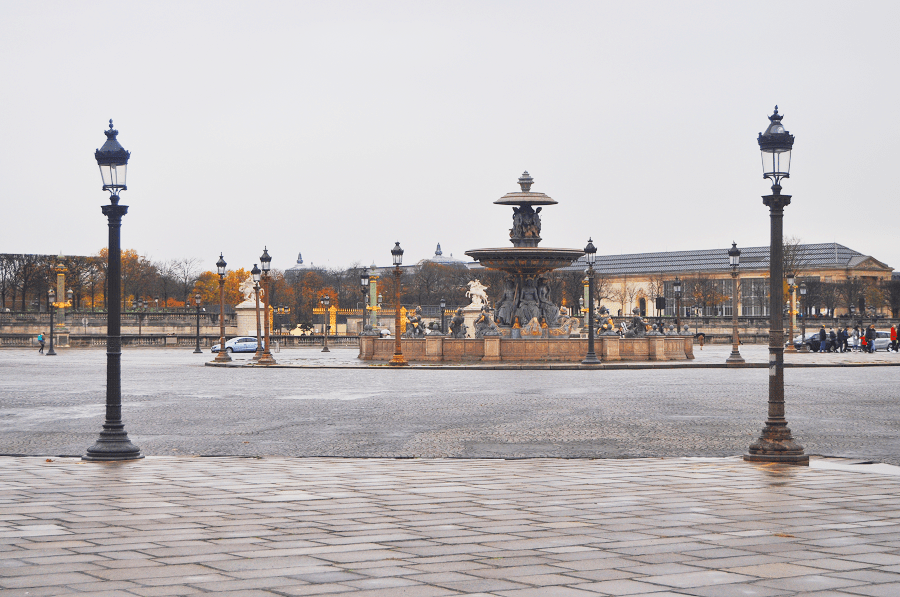Place de la Concorde (initially “Place Louis XV”), which extends over 7.56 hectares, is the largest square in Paris (France). It is located in the 8th arrondissement.
It is, with Place des Vosges, Place Dauphine, Place des Victoires and Place Vendôme, one of the five royal squares in Paris.
It has the specificity of having experienced numerous changes of name, depending on the major political events experienced by France, being called successively: place Louis XV, place de la Révolution, place de la Concorde, place Louis-XVI ( 1826-1830) and, from 1830 to the present day, again Place de la Concorde.
Located on the right bank of the Seine river, at the foot of the Champs-Élysées, it connects them, which rise towards the northwest, to the Tuileries garden which extends towards the southeast. Via Rue Royale, it opens to the north onto the Madeleine Church and to the south, via the Pont de la Concorde which crosses the Seine towards the 7th arrondissement, onto the Palais Bourbon.
Administratively, the square itself is located in the Champs-Élysées district of which it is the eastern end. But the two buildings which border it to the north, on either side of rue Royale, are in the Madeleine district, still in the 8th arrondissement.
Close to the center of Paris, the square occupies a privileged position because it punctuates two main axes:
- north-south axis made up of Montmartre, the department stores of Boulevard Haussmann, the Madeleine church, the National Assembly;
- west-east axis made up of the Arch of La Défense, the Arc de Triomphe, the avenue des Champs-Élysées, the Tuileries garden and the Louvre museum.
Place de la Concorde is served by Paris metro lines 1, 8 and 12 at Concorde station, as well as by lines 42, 45, 52, 72, 73, 84, 94 and Tootbus Paris of the RATP bus network and by lines N11 and N24 from Noctilien.
Main sights
The centrepiece of the Place de la Concorde is an ancient Egyptian obelisk decorated with hieroglyphics exalting the reign of the pharaoh Ramesses II. It is one of two which the Egyptian government gave to the French in the 19th century. The other one stayed in Egypt, too difficult and heavy to move to France with the technology at that time. On September 26, 1981, President François Mitterrand formally returned the title of the second obelisk to Egypt.
The Fontaines de la Concorde are two monumental fountains located in the Place de la Concorde in the center of Paris. They were designed by Jacques Ignace Hittorff, and completed in 1840 during the reign of King Louis-Philippe. The south fountain commemorates the maritime commerce and industry of France, and the north fountain commemorates navigation and commerce on the rivers of France.
The north side of the square, along the Rue de Rivoli, is occupied by two palatial buildings, whose matching facades were designed by Ange-Jacques Gabriel. They are separated by the Rue Royale, which enters the square from the north and was also designed by Gabriel. He planned the harmonious facades of the buildings along Rue Royale, including the facade and interior of his own residence at Number eight.
On the east the Place de la Concorde is bordered by the two terraces of the Tuileries Garden, the park of the royal palace. The palace was burned by the Paris Commune in 1871, and few vestiges remain. The highly-ornate gilded gateway to the garden was designed by Ange-Jacques Gabriel, the architect to the square, and leads to the grand promenade of the garden which extends east as far as the Louvre.
Closer to the Seine is the Orangerie Museum, which was built in 1852 by architect Firmin Bourgeois as a winter shelter for the Tuilerie citrus trees, also under Napoleon III. It was later converted into an art exhibition hall, and since 1927 it has been the home of one of the most famous groups of works of Impressionism, the eight paintings of the “Water Lilies” series by Claude Monet. It also displays the Walter Guillaume collection of impressionist and paintings and works from the school of Paris.
The terrace overlooking the square also displays a number of important works of sculpture. These include, since 1998, four works by Auguste Rodin: “The Kiss” (1881-1888); a bronze copy of the marble original, cast in 1934; “Eve” (1881); The “Grand Shadow” (1881); and “Meditation, with arms” (1881-1905). It also displays more modern works, including “Le Belle Costumé” (1973) by Jean Dubuffet, and “Le Grand Commandement Blanc” by Alain Kirili (1986). Two marble statues of lions are also displayed on the terrace, dating from 18th century, and made by Giuseppe Franchi.
See more:


















